Black women’s voices in white (art) spaces
by Nicole McNeilly and Marijke Everts
‘How can the contemporary art scene in the Hague include the voices and work of black women? What happens when we center Black women artists in the conversation?’
It has been almost two weeks since Sekai Makoni asked these questions to a panel at the Hague Contemporary Art Weekend. We enjoyed a rich discussion between Sekai and her co-panellists, Shardenia Felicia (recently graduated from KABK), Nike Ayinla (Orisun Studio) and Aya Kone (KABK student). Since then, we (artist and KABK graduate Marijke Everts and cultural researcher Nicole McNeilly) have been reflecting on the panel, some of the key questions raised and potential ways forward. Here is an overview of the main issues at stake.
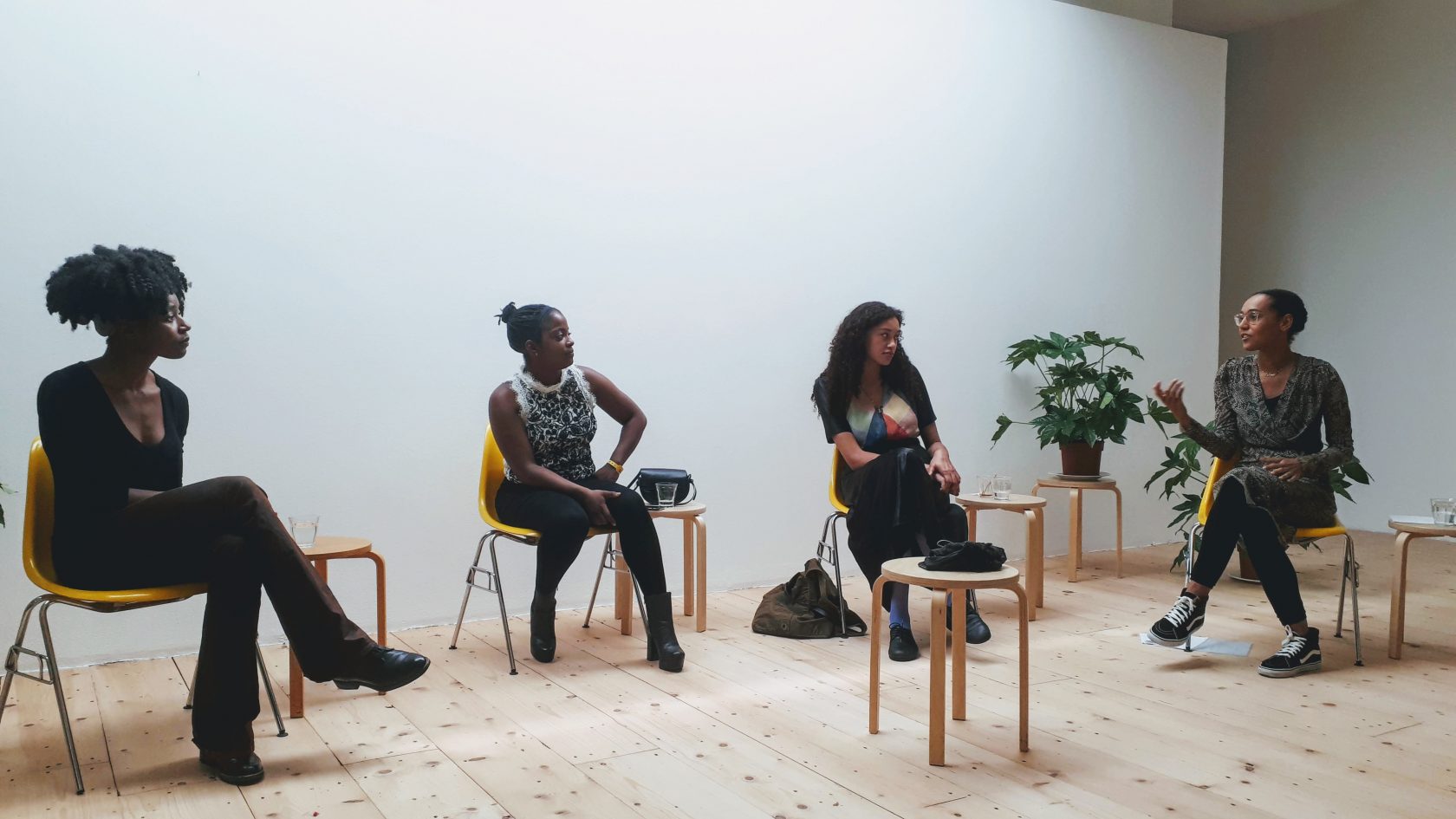
How does black womanhood appear in your art?
This first question posed by moderator Sekai Makoni to the panellists struck us as jarring: would you ask this question to a white artist? Yet it raised some important topics straight away. Motherhood, for example, came across as a strong theme, thanks to the openness of recent art graduate and mother of two, Shardenia Felicia. Shardenia had her second child in her last year of her Masters, and faces questions such as ‘is the father still around? Was it planned?’. These questions are borne from stereotypes about people of colour, and in the Dutch context, those from the former colonies, like Curaçao, from where she originates. Shardenia has obviously reflected on these experiences – she added that she uses these intimate questions to make new work.
The white gaze reacting to black art
The panellists described how some people are uncomfortable with art that raises questions or experiences of racism, colonialism or discrimination. A lack of experience might mean that the viewer sees the messages in the art as a personal threat or an accusation that challenges their (comfortable) position in the world. This often corresponds with a negative response. But let’s not be egoistic: these messages are not personal. They most often address structural problems, and – like all art – should be applauded if they evoke a personal response from the viewer. As we discuss later, when there is a stereotype that black artists must focus on blackness and their lived experiences of racism, for example, why are reactions so negative when black art addresses how it is to be an artist in an unequal world?
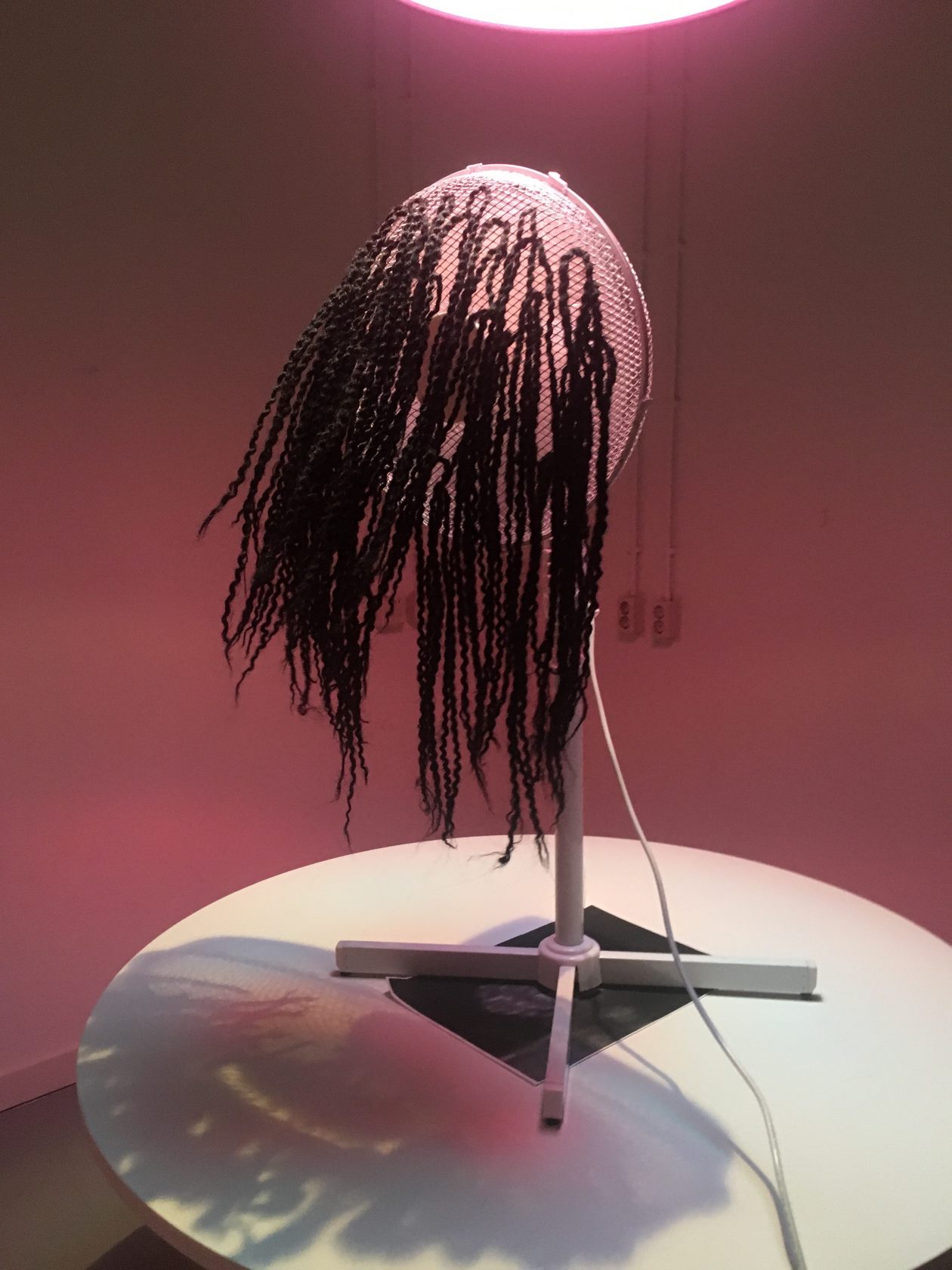

The Hague - diverse but divided
The contradiction of the Hague comes through both in society and in its art infrastructure. Though super-diverse and international, the Hague is deeply divided socially. This exclusion, according to the panellists, is also reflected in the arts scene in the city. Yet the feeling remained that this was not just a question of the Hague. How is this reflected throughout the Netherlands, across the EU and the rest of the world? Nike added that it’s not just the art scene. Institutions have been built according to historical contexts, but perhaps it’s the exclusionary effect of the Dutch art scene – traditionally seen as being progressive, free and open-minded, in the eyes of the panellists – that makes it so shocking when it’s exposed.
Even more keenly, the lack of value afforded to the arts and an inherently white and exclusionary art system acts as a barrier to younger diverse talent, who might be discouraged from pursuing the arts as their career. The assumption of the local museum and arts sector that it is talking to a white audience perpetuates an ongoing exclusion of diverse audiences in the city.
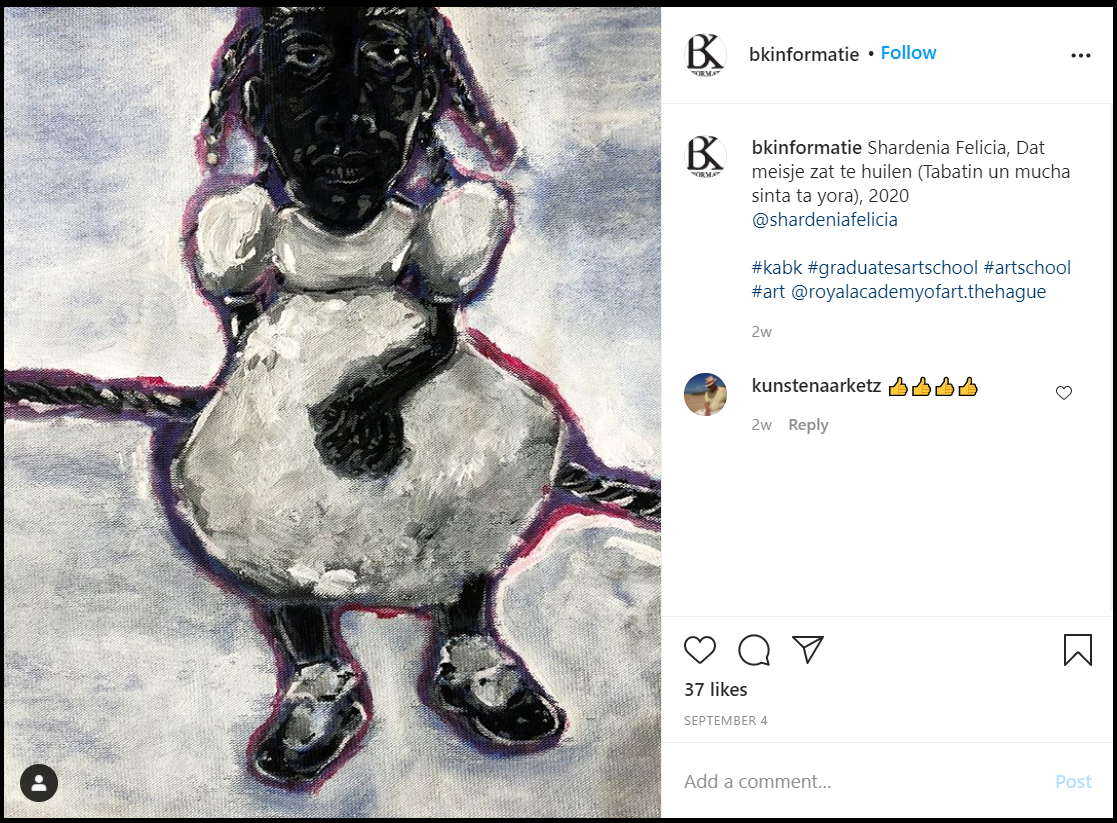
A lack of diversity and representation in the creative education system
The artists and speakers described how challenging they felt it was to present their art as artists of colour. Aya Kone described a barrier between herself and the art educators in the KABK, who are nearly all white Europeans. (As a graduate of the KABK (2014), Marijke reflects that ‘it was interesting – and sad – that not much has changed’) Aya referenced visiting professor Quinsy Gario as a ‘breath of fresh air’, but noted that this is just a visiting position (Marijke: ‘it’s great, better than nothing’). Not all of the art educators are part of the problem: many are very supportive and open to the direction art students want to take. But it does leave open a space for a (potentially toxic) limited world view.
The art history education curriculum is Western-focussed, and the KABK is no exception. At an event in the Hague recently, an artist and art director (a graduate of another Dutch art school) described that the book that everyone was required to internalise on art history had one chapter on non-Western art (‘oriental’), and that that chapter was not obligatory. Understandably, then, few students studied it. Likewise, Marijke has no recollection of any non-white artists or art philosophers that she studied during her degree.
The panel discussed the effects of having an all-white panel of educators and assessors. From having to over-explain your work, to arguing against following stereotypes because they seem to make sense in the limited view of the art educator, the injustice is clear for the emerging artists who are trying to find support for their emerging art practice.
Marijke, who is of Ghanaian and Dutch origins, reflected on one art educator asking her to make her work more about ‘herself’. She then made an experiment with pattern-based paintings and masks, and sadly realised this is exactly what her educator wanted from her and viewed as her background. It raised an unsolvable dichotomy: should she get lower grades because those grading her art don’t get why – as a black woman – it doesn’t reflect the stereotypes about what her art should be, or get lower grades because she follows the stereotypes but doesn’t believe in them?
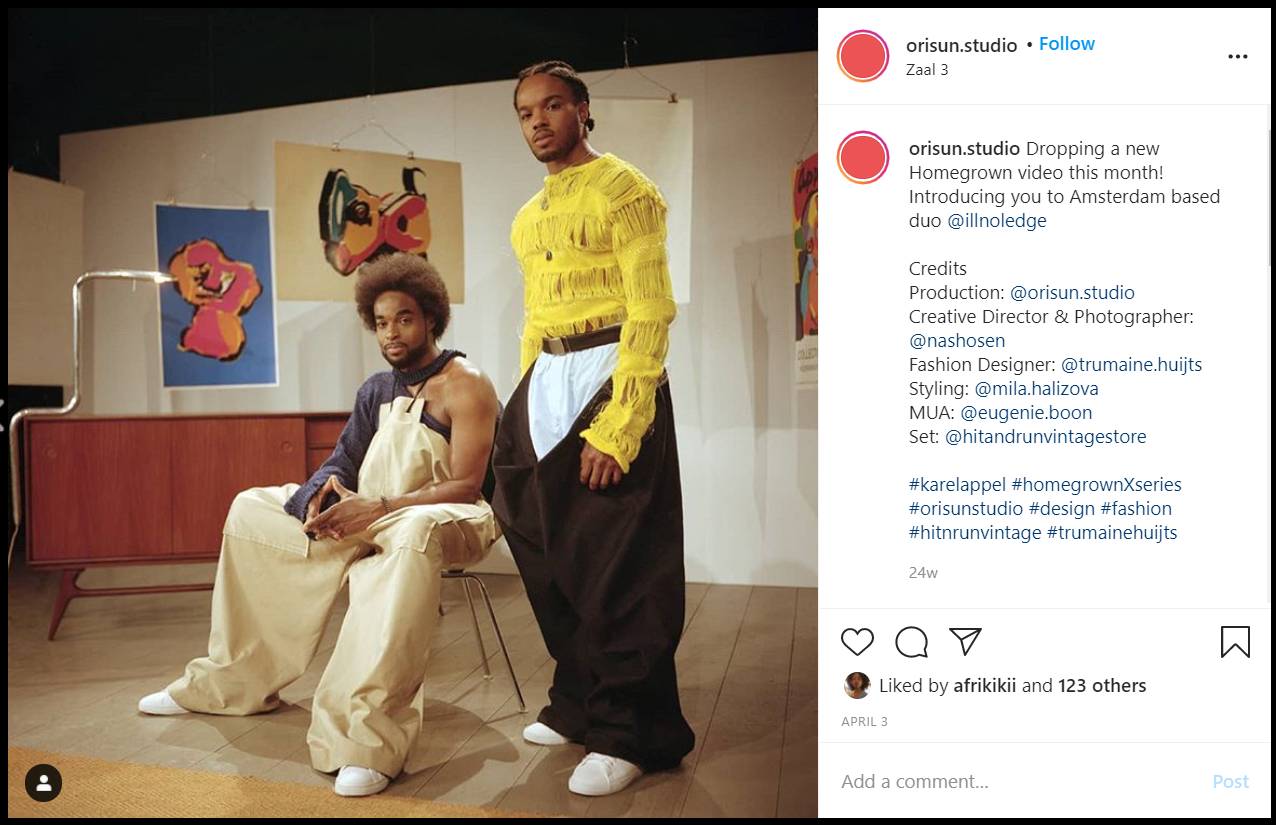
Why are things not changing?
As well as focussing on how to change things, at the very core of our thinking should be the question why are things not changing, a question posed by Nike. A desire for change is not evident, or it would have already happened already. There is a performativity in place at the moment, through a desire to be inclusive because of the context of ongoing social justice movements and a heightened sense of inequality. Change should not be tokenistic, and diverse art should not be exoticised.
There are some practical and immediate measures that can be taken. Black artists need shared spaces to work and be exhibited, and this needs long-term investment. There is little support for the artist outside of the art school system, where there are few diverse people in the creative economy. Furthermore, the art school system should be more diverse – but this should go hand-in-hand with structural change. The art school remains afraid of dealing with the implications of history, like much of society, yet it should focus on the opportunities that this could bring about.
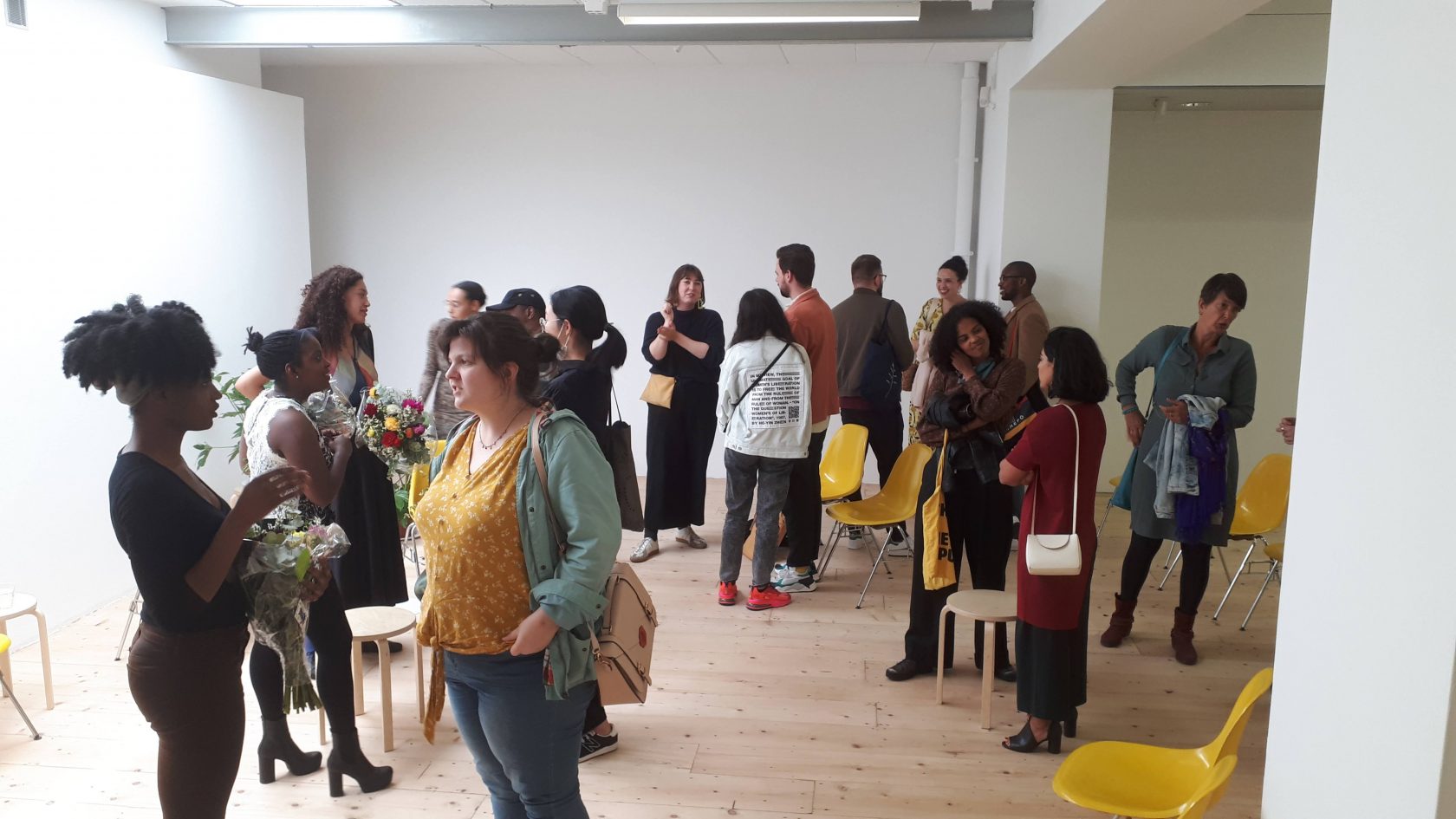
Labour and the mental load
Why should inequalities be addressed by those most at risk and already disadvantaged? This remains the case in the art world. Change needs to start at the top-level, talking with curators and gallery owners. In an institution, each colleague should be asked the question – or ask it to themselves – of how to make their work fairer and how to proactively address inequalities (looking backwards as well as forwards). The panel made it clear that artists are always willing to collaborate, but the structure – and the money flow behind it – has to change in order for it to be meaningful.
Why do black artists constantly need to (over)explain their work? Why does a black artist have to add a layer of explanation relating to their identity? Artists should be seen as individuals, avoiding groupism and stereotypes.
Those with privilege should take a step back and give a space for others to step forward. This is not about losing out, but about reducing some of the emotional and physical toll that comes with fighting for an equal position in the system.
What was missing?
The bigger audience. Social distancing puts a limit on participation, and, though it is planned be broadcast on Sekai Makoni’s podcast series, the event was not live-streamed. Why not? As referenced by a member of the audience, the event had one of the most diverse audiences the Hague Contemporary Weekend events were likely to see.
A fuller programme of debate at the Hague Contemporary Art Weekend. This talk stood out as the only panel or event in the whole contemporary art weekend that gave a space to talk about inequality in the arts, one of the most pressing challenges the sector is facing. Though it stood out as a little tokenistic, it could be the start of something great.
We hope that this article does justice to the discussion on the day, and further highlights some of the challenges and solutions that need to be addressed by the Hague, and wider, arts sector.
About co-author Marijke Everts
Ghanaian and Dutch artist who studied at KABK and currently works for the digital cultural heritage organisation Europeana Foundation. Artistically, she works on the themes of identity and home through photography, mixed media art and installation works. https://www.marijkeeverts.com/